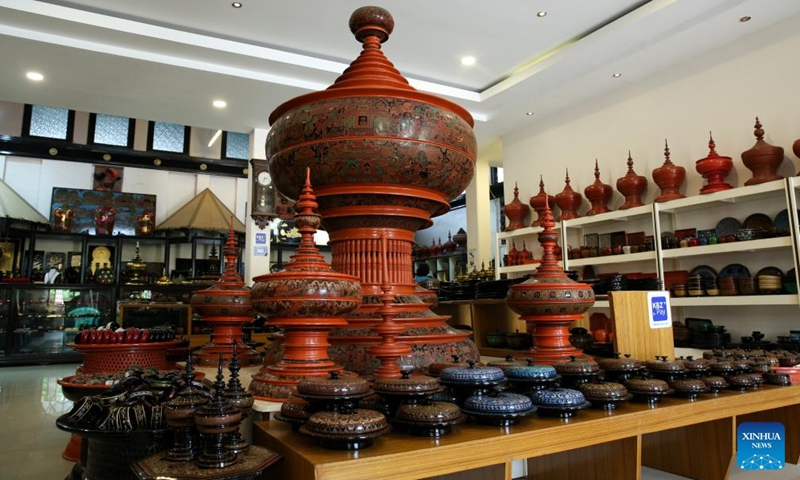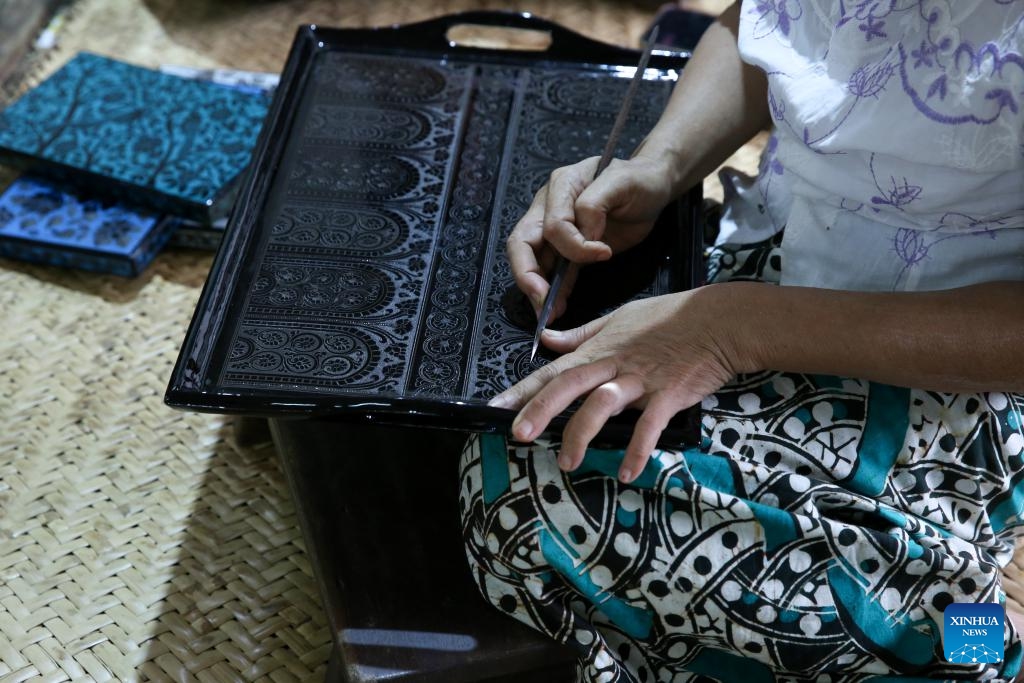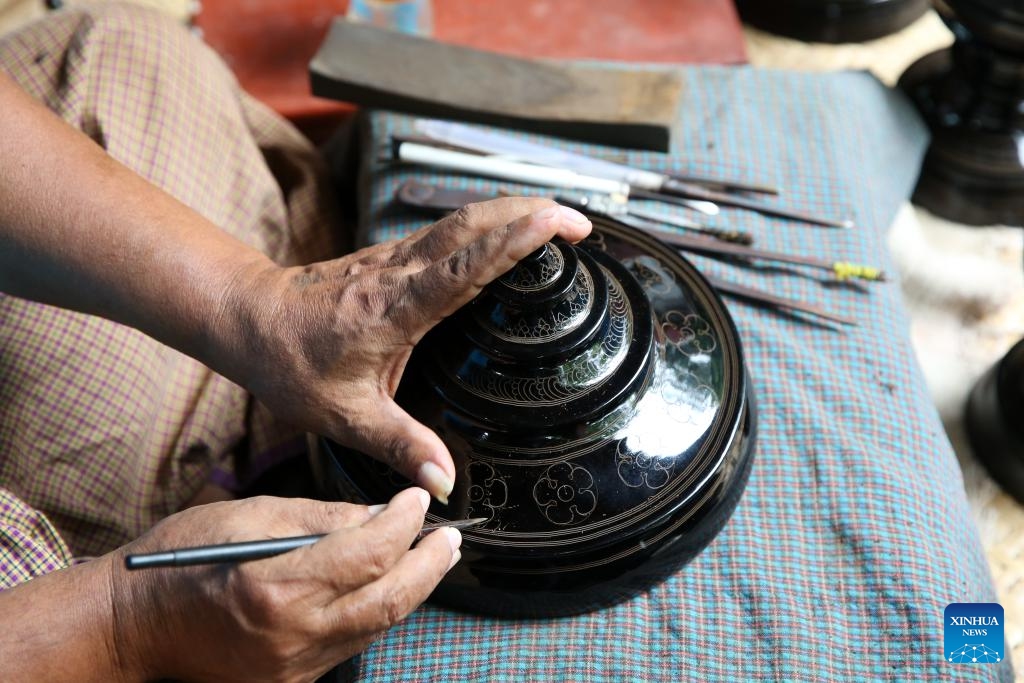
This photo taken on Aug. 24, 2024 shows colorful lacquerwares at a shop in Bagan, Myanmar, Aug. 24, 2024. (Photo: Xinhua)

A woman carves on a lacquerware at a workshop in Bagan, Myanmar, Aug. 24, 2024. (Photo: Xinhua)

This photo taken on Aug. 24, 2024 shows colorful lacquerwares at a shop in Bagan, Myanmar, Aug. 24, 2024. (Photo: Xinhua)

A man carves on a lacquerware at a workshop in Bagan, Myanmar, Aug. 24, 2024. (Photo: Xinhua)
Myanmar lacquerware has a long tradition, with the art mainly flourishing in Bagan, a central part of Myanmar that preserves this craft as a heritage.
Mar Mar Shwe, 47, the owner of the Shwe Yati Lacquerware shop in Bagan, said, "Our family has been running this lacquerware business for over 70 years, passing it down through generations. We are committed to preserving this art as a way of supporting Myanmar's traditional handcrafts."
"When people think of lacquerware, they associate it with Bagan, the place where this art originated. Bagan is the heart of lacquerware craftsmanship, and from here, we distribute our products to other places," she added.
Aung Kyaw Tun, 45, manager of the U Ba Nyein Lacquerware workshop in Bagan, said, "Our family has been running this lacquerware business for about 77 years, which has been passed down through three generations since my great-grandfather."
The lacquerware business now faces challenges. Raw materials like bamboo, horsehair, and wood have become scarce and expensive, leading to reduced production and difficulties in supporting workers. Skilled labor is also dwindling as younger generations seek other jobs or move abroad for better opportunities, he said.
"Despite the challenges, this art will be preserved for future generations," he added.
The art of lacquerware, one of Myanmar's 10 different flowery arts and crafts of the country, has been known to exist since the Bagan period. Due to its historical significance, Bagan, Myanmar's first capital, proudly continues this tradition.
Lacquerware associations and colleges in Bagan are key to preserving this art, ensuring that the tradition is not lost and that the lacquerware industry, along with its rich history, continues to thrive, he added.
